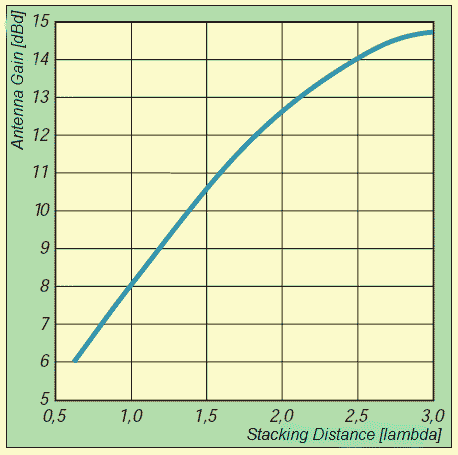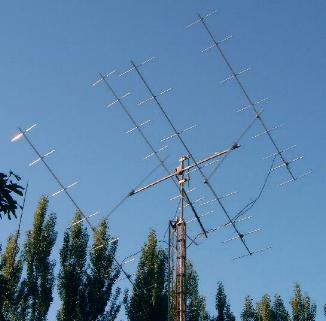 |
Stacking of antennas is a method for increasing the gain by decreasing the radiation angles. Thereoretically the additional gain for a second Yagi with optimal stacking distance is 3 dB (exception: Dipole and 2-El.-Yagi 4 dB). The stacking distance depends on the radiation angles (azimuth and elevation) of each single Yagi. As a rule of thumb take the stacking distances for vertical stacking of horizontally polarized Yagis in the picture below. All pictures show examples for 2m-Yagis, but the basics are for all frequencies. The picture shows the distance for two optimized Yagis for 3 dB stacking gain. The gain (dBd) of a single Yagi versus the stacking distance (lambda). With that distance you are always very close to the optimal data. With lower distance you get lower gain, but mostly a pattern with less sidelobes. If the Yagis come to close together, the impedances of the Yagis will change, you should avoid that! |


